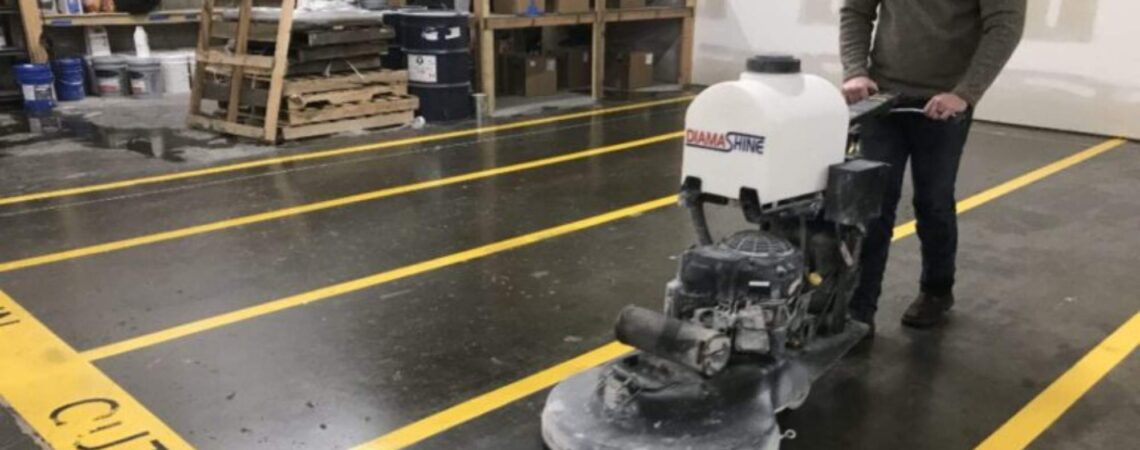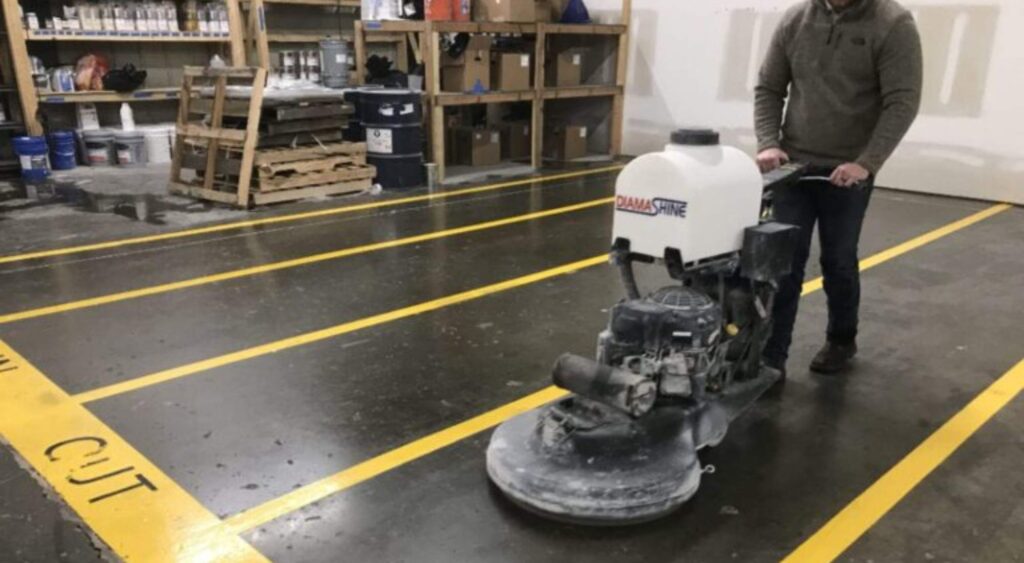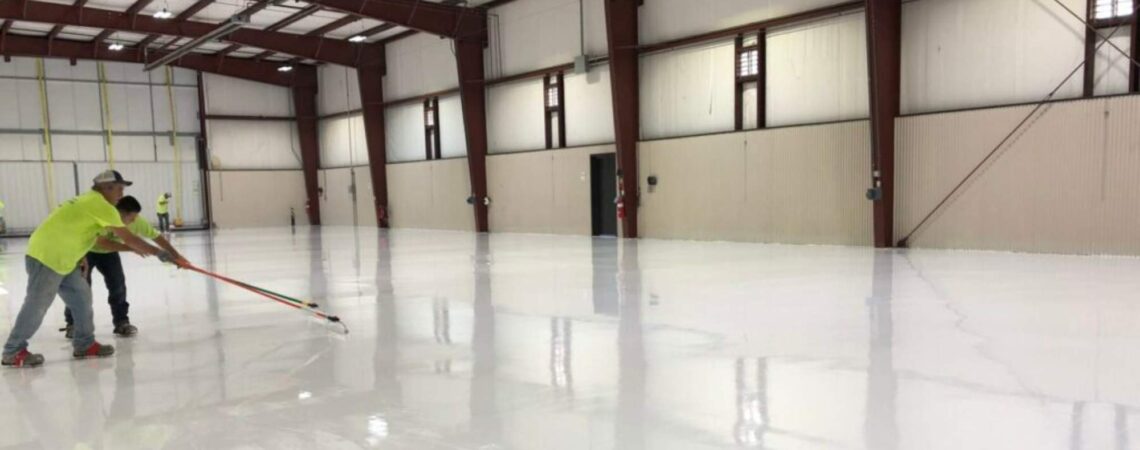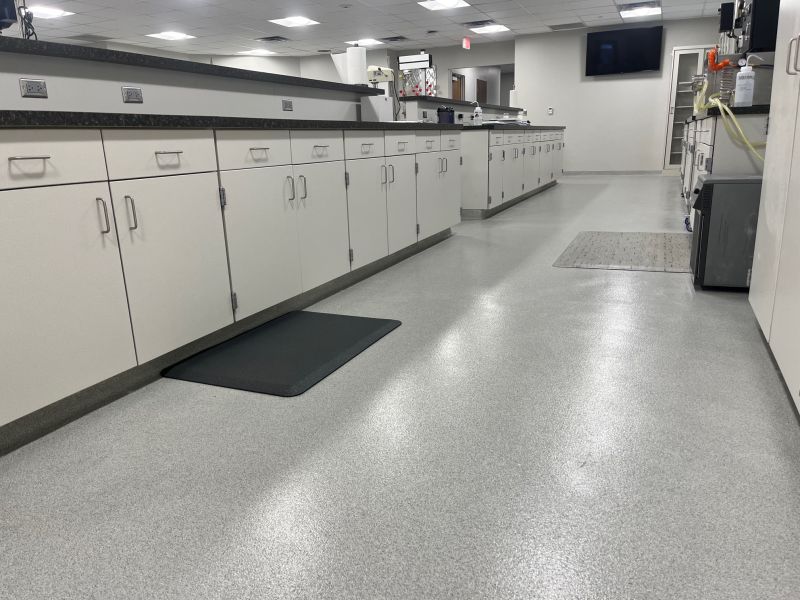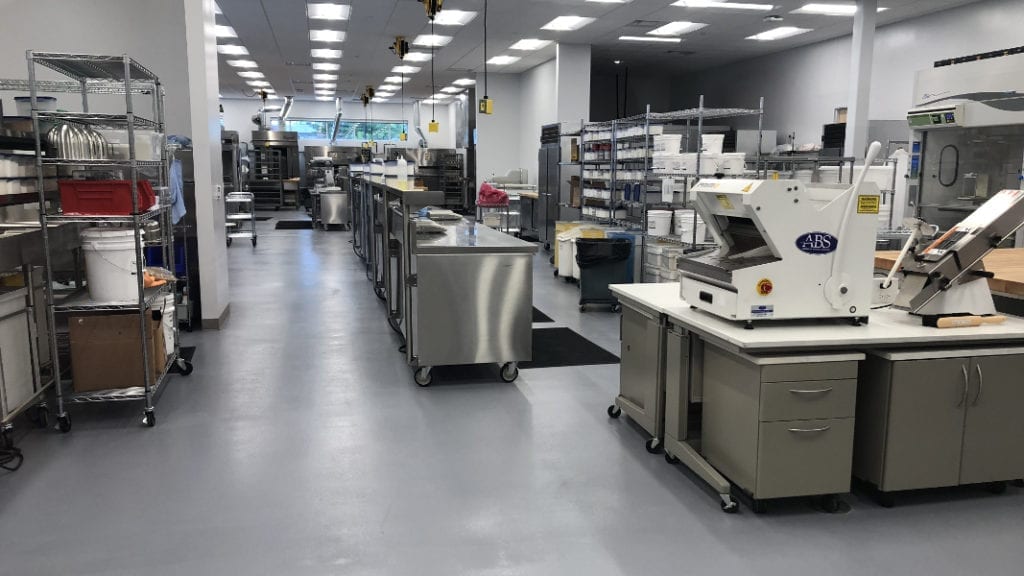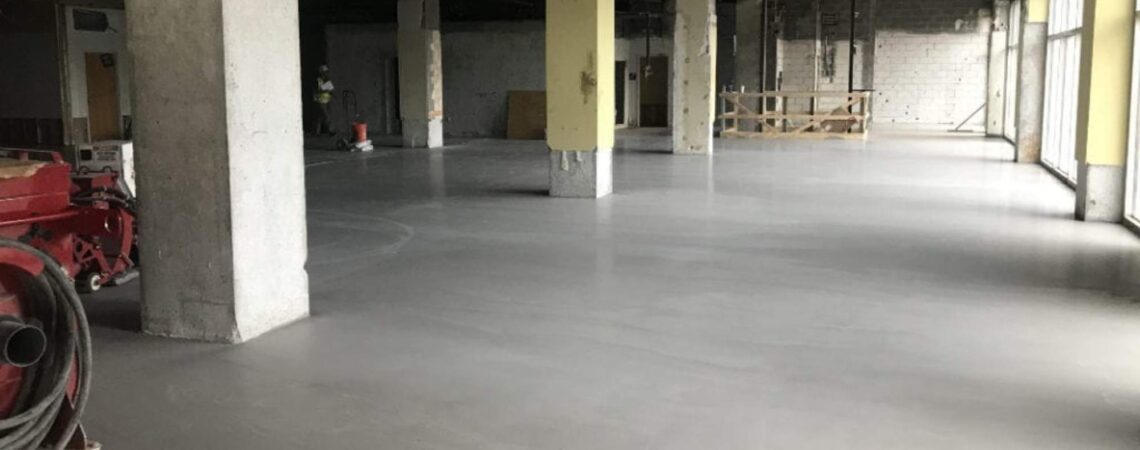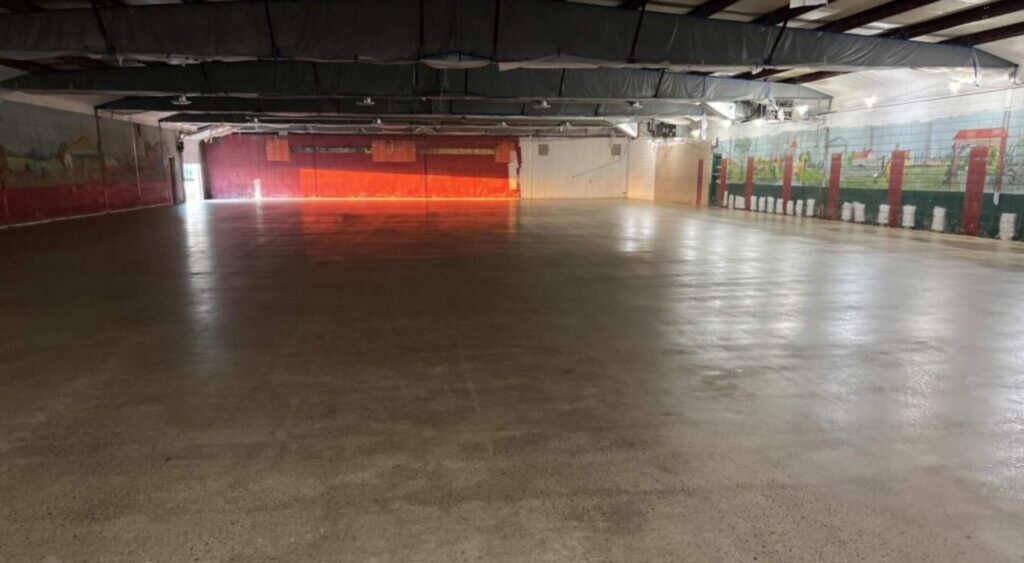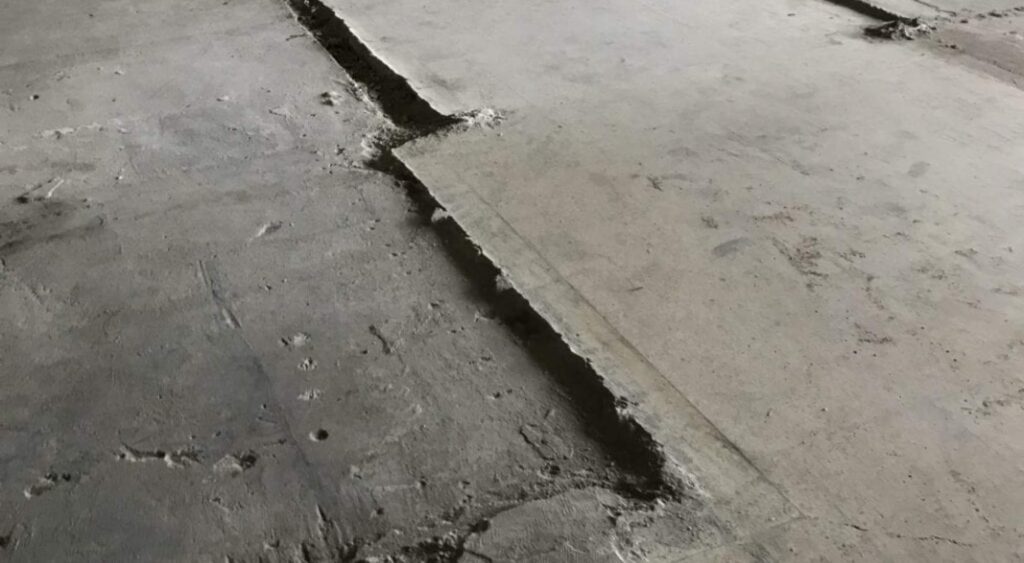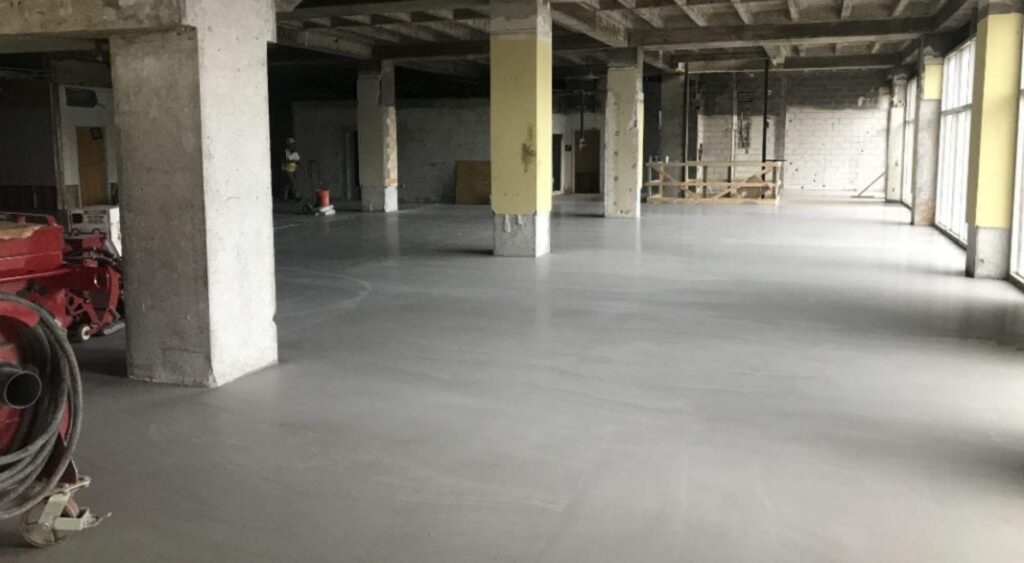HOW TO CLEAN EPOXY FLOORS: EASY STEPS FOR A PROFESSIONAL LOOK
Now that you’ve got a beautiful, shiny floor, you want to keep it looking that way.
Whether it’s in an animal shelter or a healthcare facility, a well-maintained epoxy floor can help your space look clean and professional.
Perhaps you didn’t consider how to clean epoxy floor coating before you had it installed. Don’t worry, we’re here to help.
Keep reading to learn how to clean an epoxy floor in five easy steps, along with our top six cleaning tips to keep your epoxy floor looking new for years to come.
Table of Contents
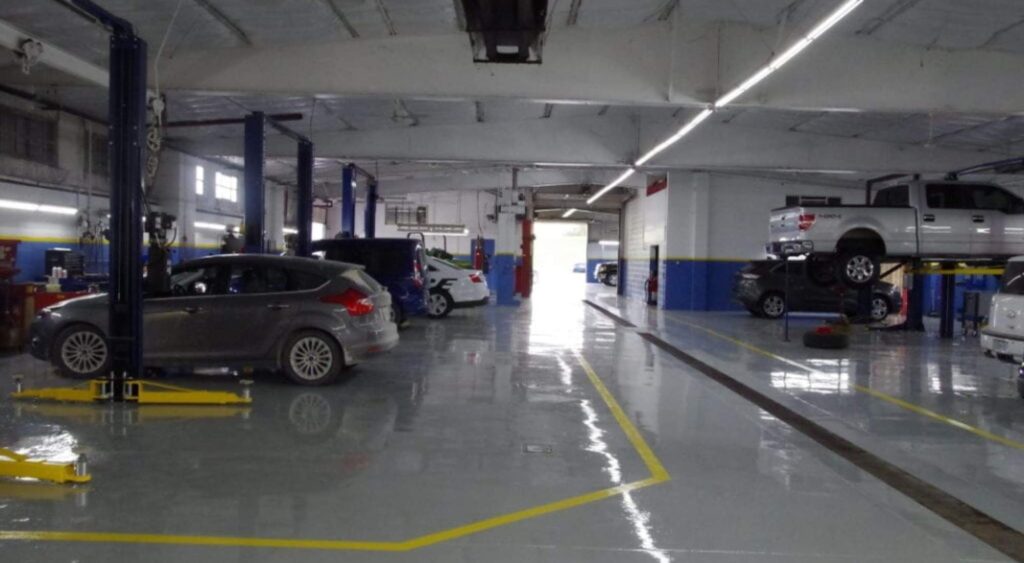
How To Clean Epoxy-Painted Floors in 5 Easy Steps
If you aren’t sure how to clean epoxy floors, here’s an easy-to-follow, five-step method.
- Sweep: Sweep the area of dirt and debris using a manual broom, an auto-scrubber with a sweeper built in, or an industrial broom.
- Rinse: Rinse the floor with clean water and use an industrial squeegee to dry it.
- Mix and pour the cleaner: Using a pH-balanced cleaning solution, follow the instructions to mix the cleaner in the appropriate ratio. Many floor scrubbers automatically mix the solution with water before dispensing it onto the floor. If you aren’t using a floor scrubber, mix the cleaning solution before applying it to the floor. Allow the cleaner to sit on the floor for two to five minutes.
- Scrub the floor: For larger commercial and industrial spaces, it’s best to use an auto-scrubber. Floor scrubbers deliver a consistent clean each time and are easy to use and maintain. Otherwise, you can use a stiff-bristled brush to agitate the grimy areas. Squeegee the dirty water to drain.
- Rinse thoroughly: Floor scrubbers remove the guesswork from the cleaning process by dispensing the right amount of water to rinse your floor after scrubbing. If you aren’t using a floor scrubber, pour water over the area and use the squeegee again to dry it.
Not cleaning or rinsing your floors often and thoroughly can create a slick, slippery surface. Follow these steps and add this routine to your regular maintenance program to help keep your epoxy floors clean, long-lasting, and most of all, safe.
Are you considering installing epoxy floor coating in your commercial facility in the greater Kansas City area? Look no further than Treadwell. Contact us today to find out why so many companies trust us as their premier epoxy flooring company.
What Cleaners Can You Use on Epoxy?
It’s important to use a pH-neutral floor cleaner. You can find one at your local home store. Be sure to read the product labels and look for “pH neutral” or a pH level close to seven. You can also make a pH-neutral cleaner using dishwashing detergent and hot water. But most importantly, remember step five, making sure you wash away your cleaner completely.
Never use bleach, ammonia, citric acid, or vinegar on epoxy flooring. The cleaners can be too harsh and react with the chemicals in the epoxy, weakening the bond between the resin and the floor.
6 Cleaning Tips To Keep Your Epoxy Floor Looking New
#1: Sweep Daily
Sweeping your floors daily with a broom or mechanical cleaning equipment prevents dust and dirt from accumulating. If you’re using a mechanical sweeper, use a soft bristle brush to avoid scratching the floor coating. A hard bristle brush can cause the gloss to fade.
Bonus tip: To minimize dirt and moisture accumulation, place mats at entryways.
#2: Scrub Weekly
How often you scrub may depend on the amount and type of grime that typically covers your epoxy floors. However, it’s best practice to scrub epoxy floors at least once a week. High-traffic areas and places where oil and grease are prevalent should be scrubbed daily. Use the proper brush, detergent, mop, and bucket or a mechanized scrubber.
#3: Don’t Wait To Clean Spills
It’s important to clean all liquid spills immediately, before they damage the floor finish or create a hazard. The longer harsh liquid spills like caustics, acids, and solvents remain on a floor, the more likely they are to soften, discolor, or remove the sealing coating. If you frequently use chemicals in the area, consult your expert epoxy flooring installers for a guide to chemical-resistant sealant options.
#4: Repair Scratches and Gouges
It’s critical to the integrity of your epoxy floors to repair any large gouges or scratches as soon as possible. Deep cuts and gouges can allow moisture to permeate under the coating and cause peeling.
Follow these steps to repair damages in your epoxy floor coating:
- Clean any grease, oil, and grime from the area using a heavy-duty powdered degreaser called TSP (trisodium phosphate) detergent.
- You can sand the scratched area by hand using 100-grit sandpaper and feather the edges until smooth.
- Rinse the floor thoroughly and allow it to dry fully.
- Repair the damaged area using the original coating material, according to the instructions.
If your epoxy floors are damaged and you’re unable to repair them using the above tips, contact the professionals at Treadwell. We test to determine the cause of the damage and identify the best flooring repair option available. Contact us today for epoxy floor repairs and services.
#5: Keep Up Stain Prevention
If you have stains on your epoxy floor, start with a mild solution before using more powerful removers until the stain disappears. Always be sure to wear rubber gloves and proper eye protection when working with any chemicals.
Grease and oil may stain your floor coating, especially if they remain on the floor and begin to dry. If a spill occurs, promptly scrub the area with TSP, carefully following the instructions on the label.
If you missed a spill, and it has dried, it may be difficult to remove the stain, or it can leave a film on your floor, making it harder to maintain. If this happens, try using a plastic tool to remove the residue. Be careful not to scratch the coating. Then, wet a clean cloth with a TSP cleaner and gently scrub the stained area.
#6: Remove Rubber Burns and Scuffs
Vehicle tires can leave rubber burns on the epoxy floor coating. Follow these steps to remove rubber burns:
- Start by agitating and removing loose debris with a stiff brush, broom, or mechanical scrubber.
- Mix a TSP degreaser or detergent with water to form an emulsion, apply it to the burn marks, and let it sit for a few minutes.
- Scrub the area with a semi-stiff nylon brush.
- Rinse thoroughly with water.
- If the rubber scuff persists, repeat.
- If the burn still persists, consider a steam cleaner to avoid damage to your epoxy.
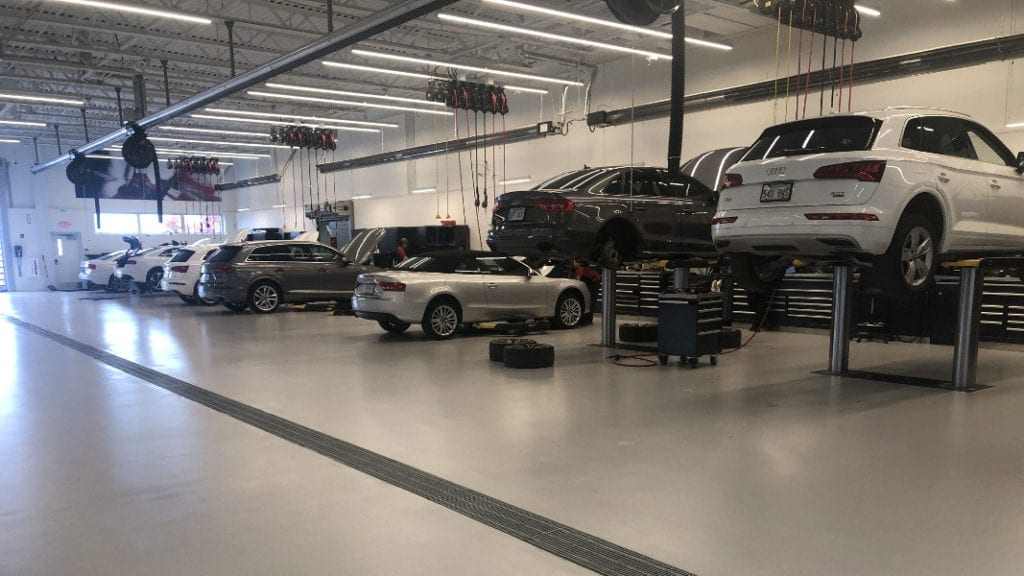
Why Epoxy Flooring Needs Regular Cleaning
If you want your floors to last, it’s important to establish a routine maintenance program. Regular cleaning will help you minimize scratching from abrasive dust and limit dirt buildup.
Consistent maintenance for your epoxy floors should include:
- Sweeping and mopping daily to remove any small particles
- Cleaning spills as soon as possible
- Scrubbing the floors thoroughly every week
This will ultimately keep the appearance of your epoxy floors for many years to come.
Benefits of Regular Maintenance
Regularly maintaining your epoxy floors has many benefits, including:
- Keeping the floor free of scratches and reducing wear and tear.
- Preventing certain chemicals from eroding and damaging the floor.
- Ensuring the surface coating remains smooth and shiny.
Common Issues Without Cleaning
Without a regular maintenance cleaning schedule, you may experience the following common preventable issues:
- Small scratches
- Obvious signs of wear and tear
- Erosion from chemical spills
- A rough or bumpy-looking surface
- Loss of shine and gloss on the top coating
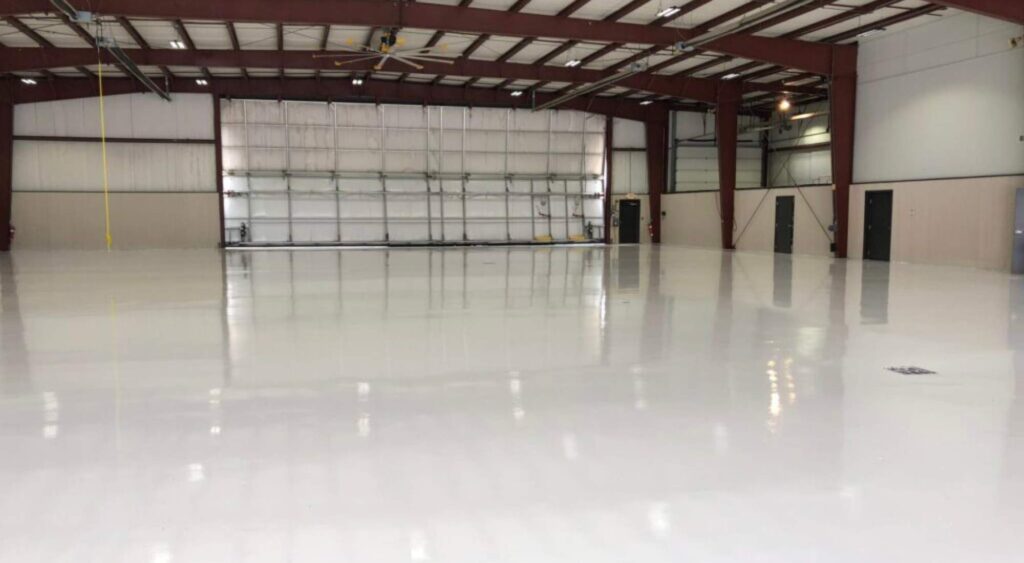
Keep Your Epoxy Floors in Top Shape – The Treadwell Way
If you’re deciding on the best flooring for your business and want a no-nonsense surface that lasts, epoxy floors could be right for you as long as you follow our recommendations for maintenance.
If you found us late and have already experienced damage to your epoxy floors, the good news is, we can still help!
At Treadwell, we repair and install epoxy flooring solutions for some of Kansas’s top companies.
Our in-house team can fully install your new epoxy flooring, working evenings and weekends to limit disruptions to your operations.
After an initial conversation, we provide a comprehensive quote and pledge to finish your installation or repair project on time and on budget.
Contact us for top-rated commercial epoxy flooring services.



